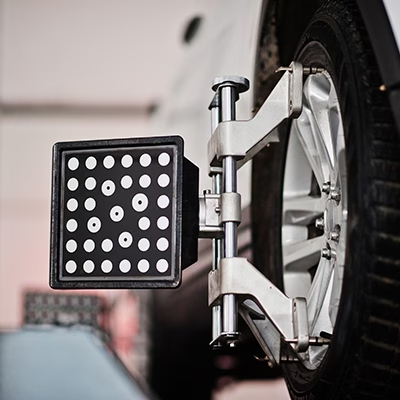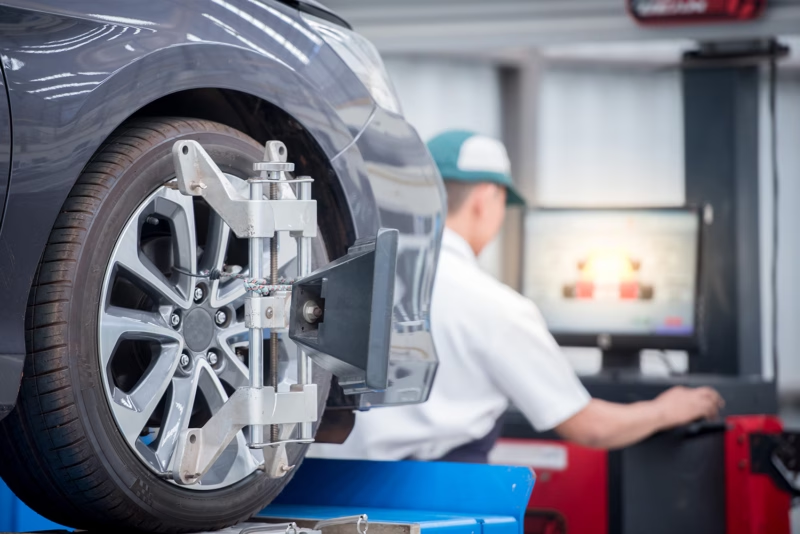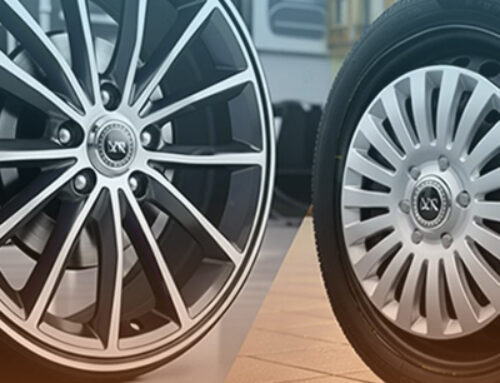Why Wheel Alignment Is Crucial for Your Vehicle’s Performance
What Is Wheel Alignment and Why Should You Care?
Understanding wheel alignment importance is essential for every driver. Wheel alignment refers to the adjustment of a vehicle’s suspension — the system that connects a car to its wheels. It’s not about adjusting the tires or wheels themselves, but rather the angles that determine how your tires make contact with the road.
Proper alignment affects everything from vehicle handling to tire wear, fuel efficiency, and even your safety. Ignoring it can lead to serious issues that cost more down the road.
How Does Wheel Alignment Work?
Key Alignment Angles
- Camber: The inward or outward tilt of the wheel when viewed from the front.
- Caster: The angle of the steering axis when viewed from the side of the vehicle.
- Toe: The extent to which your tires turn inward or outward when viewed from above.
Professional Alignment Tools
Technicians use advanced tools like laser or computerized alignment systems to precisely measure and adjust these angles, ensuring that all four wheels are aligned to manufacturer specifications.
Benefits of Maintaining Proper Wheel Alignment
1. Better Handling and Stability
A well-aligned vehicle feels more stable and responsive, especially when cornering or braking.
2. Longer Tire Life
Proper alignment ensures even tire wear, helping your tires last longer and saving you money.
3. Improved Fuel Efficiency
When wheels are correctly aligned, there’s less rolling resistance, which helps optimize fuel economy.
4. Protects Suspension Components
Avoid unnecessary strain on shocks, struts, and other parts of the suspension system by keeping your alignment in check.
5. Enhanced Safety
Good alignment helps prevent your car from veering off course and reduces the chances of losing control while driving.
Warning Signs Your Vehicle Needs an Alignment
Common Symptoms
- Steering wheel is off-center when driving straight.
- Vehicle pulls to one side.
- Uneven tire wear.
- Vibrations in the steering wheel.
- Strange noises from the suspension or steering.
If you notice any of these signs, it’s time for an alignment check.
How Often Should You Get a Wheel Alignment?
General Recommendation
Experts suggest getting a wheel alignment every 10,000 kilometers (about 6,000 miles) or every six months.
Specific Situations
- After hitting a pothole or curb.
- When changing tires or suspension parts.
- Before a long road trip.
- If you frequently drive on rough or uneven terrain.
Alignment vs. Wheel Balancing: Know the Difference
Quick Clarification
- Alignment adjusts the angles of the wheels.
- Balancing addresses weight distribution across the tires and rims to prevent vibrations.
Both are important but serve different purposes in maintaining your car’s health.
Common Myths About Wheel Alignment
“Only needed if the car pulls to one side”
False. Alignment issues can exist even without noticeable symptoms.
“Just align when replacing tires”
Inaccurate. Misalignment can occur at any time, not just when new tires are installed.
“It’s a waste of money”
Incorrect. Skipping alignments can lead to costly repairs and early tire replacement.
FAQs: Wheel Alignment Importance
✅ Can bad alignment damage the suspension?
➡️ Yes. Poor alignment can cause undue stress on shocks, struts, and other components.
✅ Does alignment improve fuel economy?
➡️ Absolutely. Proper alignment reduces tire drag, improving efficiency.
✅ Can I align my wheels at home?
➡️ Not recommended. Professional equipment is necessary for accurate results.
✅ How much does an alignment cost?
➡️Costs vary, but it’s generally affordable compared to the long-term damage poor alignment can cause.
✅ Can alignment help prevent accidents?
➡️ Indirectly, yes. A properly aligned car is easier to control and less likely to drift into danger.
Your Vehicle Deserves Stability, Safety, and Performance
While proper alignment keeps your wheels pointed in the right direction, wheel balancing ensures they rotate smoothly. Both are essential for optimal performance. 👉 Discover the science behind wheel balancing and why it matters for a smooth ride – The Science Behind Wheel Balancing: Why It’s Crucial for a Smooth Ride
Now that you understand the wheel alignment importance, don’t overlook this crucial maintenance step. Regular alignments improve handling, safety, and the lifespan of your tires and suspension.
Schedule your alignment today and feel the difference on every mile!







